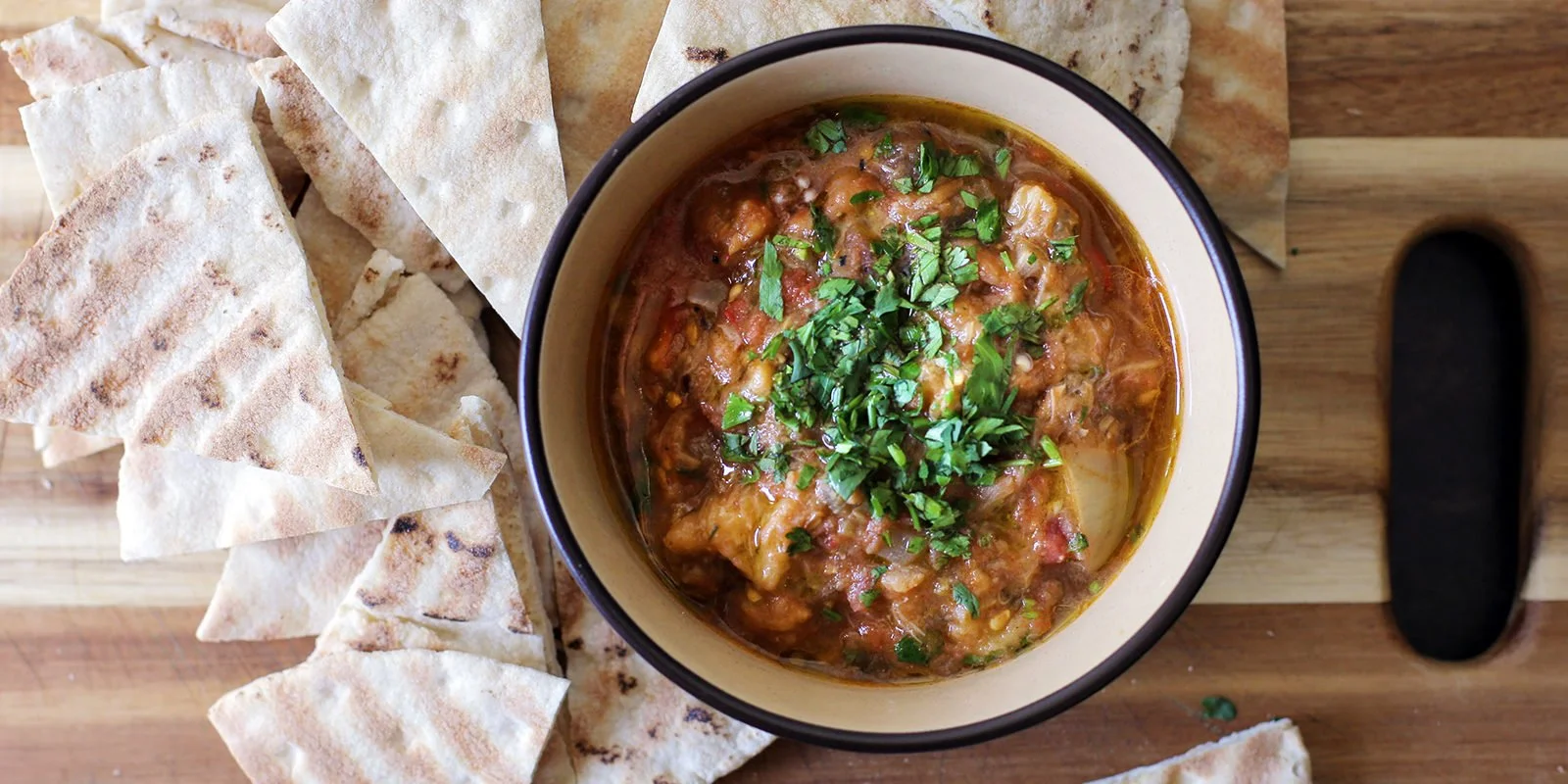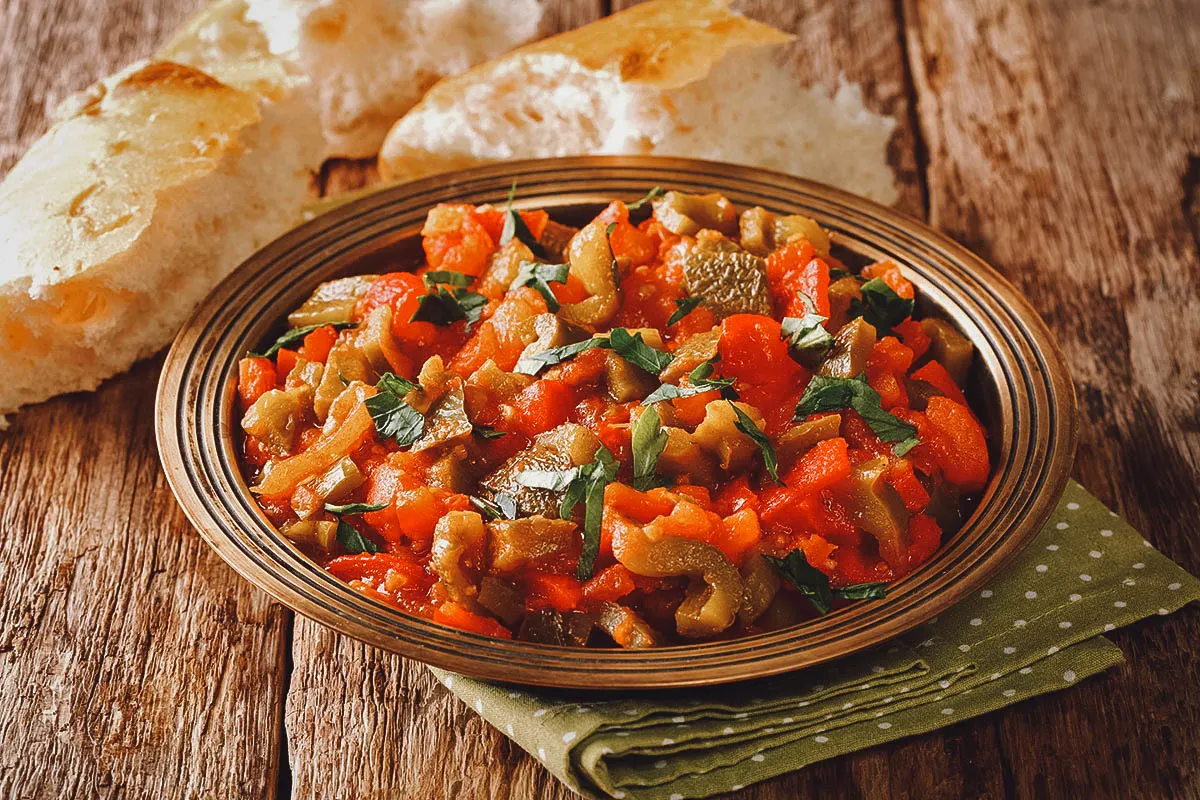

Mediterranean cuisine is often celebrated for its fresh, healthy ingredients and delightful flavors. It encompasses a wide range of culinary traditions from countries surrounding the Mediterranean Sea, such as Greece, Italy, Spain, and Turkey. While Moroccan cuisine has its own unique characteristics, it is often considered part of the larger Mediterranean food family. Moroccan dishes incorporate many ingredients commonly associated with Mediterranean cuisines, such as olive oil, lemon juice, fresh fruit, and a variety of herbs and spices. The use of staple grains like couscous and flat breads is also reminiscent of Mediterranean dietary habits. Furthermore, the Mediterranean influence on Moroccan cuisine can be seen in the prominence of olive trees and the consumption of olive oil, which is a key component in both Moroccan and Mediterranean dishes. Additionally, the frequent use of mint leaves and the popular drink, Moroccan mint tea, also reflect the common use of mint in Mediterranean countries. While Moroccan food has its own distinct flavors and techniques, its close ties to Mediterranean cuisines make it a delicious addition to the diverse culinary region.
Moroccan cuisine is a vibrant and diverse culinary tradition that is considered to be part of the Mediterranean family of cuisines. Influenced by a mix of Berber, Mediterranean, Arab, and Andalusian cooking styles, Moroccan food showcases a unique combination of flavors and ingredients.
Common ingredients found in Moroccan dishes include lemon pickle, argan oil, preserved butter, and a variety of aromatic spices such as cinnamon, cumin, and ginger. These ingredients contribute to the distinctive flavoring and complexity that Moroccan cuisine is known for.
Traditional Moroccan dishes are plentiful and varied, ranging from tagines, couscous, and pastillas to harira soup, kefta meatballs, and mechoui roasted lamb. Bread, particularly flatbreads like khobz and msemen, is a staple in Moroccan meals and plays a fundamental role in the cuisine.
While Moroccan cuisine shares some similarities with other Mediterranean countries, it also has its own unique character and flavors. The use of spices, the combination of sweet and savory elements, and the incorporation of diverse ingredients set Moroccan food apart.
With its rich culinary heritage and vibrant flavors, Moroccan cuisine continues to be a beloved and celebrated cuisine both in Morocco and around the world.
Moroccan food is a true reflection of the country’s rich history, diverse culture, and geographical location. This North African cuisine is a blend of various influences, including Arab, Berber, Mediterranean, and African flavors. The use of aromatic spices, unique cooking techniques, and a wide array of fresh ingredients create a culinary experience that is as vibrant and colorful as the country itself. From the famous tagines and couscous to the flavorful pastillas and harira soup, Moroccan food is a celebration of bold flavors, fragrant herbs, and tantalizing textures. Whether enjoyed at home, in street markets, or in traditional restaurants, Moroccan cuisine offers a journey of taste that is both exciting and soul-satisfying.
The national dish of Morocco, tagine, holds great significance in Moroccan cuisine. Tagine refers to both the traditional Moroccan cooking vessel and the savory slow-cooked stew it produces. This dish is a culinary icon that represents the rich and diverse flavors of Morocco.
Tagine typically consists of tender meat, such as lamb, beef, or chicken, cooked with an array of aromatic herbs and spices. This includes ingredients like cumin, coriander, ginger, cinnamon, and saffron, which contribute to the distinctive flavoring of the dish. Vegetables like carrots, onions, tomatoes, and potatoes are often added, creating a wholesome and flavorful stew.
To prepare tagine, the ingredients are placed in the conical-shaped cooking vessel and cooked over low heat for several hours. This slow-cooking technique allows the flavors to meld together, resulting in tender meat and a rich, complex sauce. The dish is traditionally served with couscous or crusty bread, soaking up the flavorful sauce.
Tagine reflects the cultural and geographical influences on Moroccan cuisine, incorporating elements from Arab, Berber, and Mediterranean culinary traditions. Its popularity both in Morocco and globally showcases the diverse and hearty nature of Moroccan cooking.
In conclusion, tagine is the national dish of Morocco and a staple in Moroccan cuisine. Its slow-cooked preparation method and combination of herbs, spices, and vegetables contribute to its rich and complex flavors. This dish represents the culinary traditions and cultural diversity of Morocco.
Moroccan cuisine is renowned for its rich and diverse flavors, thanks to a fusion of culinary influences from Arab, Berber, and Mediterranean traditions. Traditional Moroccan dishes are a true feast for the senses, with ingredients like aromatic spices, robust meats, and delicate pastries.
One popular dish in Moroccan cuisine is Bistteeya, a delightful savory pie also known as Basteela or Pastilla. Layers of flaky pastry encase a filling of tender meat, usually chicken or pigeon, combined with scrambled eggs, almonds, and a tantalizing blend of spices. The harmonious combination of sweet and savory flavors make Bistteeya a gastronomic delight.
Another beloved Moroccan dish is tagine, a slow-cooked stew named after the earthenware pot it is cooked in. This succulent dish features a variety of vegetables, such as carrots, onions, and tomatoes, cooked with tender meat such as lamb, beef, or chicken. The flavors are further enhanced with spices like cumin, dried ginger, salt, black pepper, and turmeric, creating a burst of warmth and complexity.
These dishes showcase the significance of spices in Moroccan cuisine. Each spice adds its own distinctive flavor, contributing to the unique taste and aroma of Moroccan dishes. The combination of spices gives Moroccan cuisine its characteristic depth and richness.
Traditional Moroccan dishes like Bistteeya and tagine highlight the exquisite flavors and cultural heritage of Morocco. Whether enjoying these dishes at a local eatery or preparing them at home, every bite is a journey to the vibrant and diverse culinary traditions of Morocco.
Morocco offers a diverse range of street foods that are a true reflection of its rich culinary heritage. Influenced by Berber, Mediterranean, and European cultures, Moroccan street food is a delightful fusion of flavors and textures.
One popular street food in Morocco is the tagine. This flavorful dish is named after the traditional earthenware pot it is cooked in. Tagine features tender meat, such as lamb or chicken, cooked with an array of vegetables and aromatic spices. The slow cooking process allows the flavors to meld together, resulting in a succulent and aromatic stew.
Another beloved street food is falafel. These deep-fried balls made from ground chickpeas or fava beans are crispy on the outside and soft on the inside. Served in pita bread with tahini sauce and a medley of fresh vegetables, falafel is a satisfying and flavorful grab-and-go option.
Harira, a traditional Moroccan soup, is another street food staple. This hearty soup is made with tomatoes, lentils, chickpeas, and fragrant spices like cinnamon and turmeric. It is often enjoyed during Ramadan as a filling and nourishing dish to break the fast.
Kebabs also make a popular street food choice in Morocco. Grilled to perfection, these skewered meat pieces are infused with a blend of spices like cumin, paprika, and coriander. Served with bread and a side of tangy sauce, kebabs are a tasty and convenient option for those on the go.
Lastly, msemen, a Moroccan flatbread, is often found in street food markets. These flaky and buttery squares are made by layering dough with oil or ghee and then cooked on a griddle. Msemen is enjoyed on its own or filled with sweet or savory fillings like honey, cheese, or vegetables.
Moroccan street food is a vibrant and diverse culinary experience, offering a medley of flavors and influences. From tagine to falafel, harira to kebabs, the street food scene in Morocco is a must-try for any food lover.
Moroccan cuisine is known for its bold flavors and unique blend of spices. But is Moroccan food considered Mediterranean? While Morocco is located on the northwestern edge of the African continent, its culinary influences are undoubtedly intertwined with those of the Mediterranean region. This fusion of flavors and ingredients can be seen in traditional Moroccan dishes, which often incorporate ingredients like olive oil, lemon juice, and fresh herbs—staples of Mediterranean cuisines. The Moroccan diet also shares similarities with the Mediterranean diet, which is known for its emphasis on fresh fruits and vegetables, whole grains, and lean proteins. Additionally, Morocco’s geographic proximity to Mediterranean countries like Spain, Italy, and Greece has fostered cultural exchanges and influenced their respective culinary traditions. So while Moroccan cuisine has its own unique identity, it can be considered as part of the broader Mediterranean culinary family, showcasing the rich diversity and interconnectedness of the region’s food.
Moroccan cuisine is often considered a part of the broader Mediterranean culinary tradition due to its numerous similarities with other cuisines in the region. One of the main commonalities lies in the use of olive oil as a foundational ingredient in cooking. Just like in other Mediterranean countries, olive oil is widely used in Moroccan dishes for its rich flavor and health benefits.
Additionally, Moroccan cuisine shares a love for fresh vegetables, meat, seafood, and herbs with other Mediterranean cuisines. The abundant use of fresh herbs such as parsley, cilantro, and mint adds a distinctive flavoring to Moroccan dishes, just like in Greek or Italian foods. The inclusion of lemon juice or other acidic components in Moroccan recipes also contributes to the overall tanginess and freshness, which is a common characteristic of Mediterranean dishes.
When it comes to specific dishes, Moroccan cuisine has some similarities with other Mediterranean countries. For example, Moroccan tagine, a slow-cooked stew typically made with meat, vegetables, and a blend of spices such as ras el hanout, is reminiscent of Greek or Turkish dishes such as moussaka. Similarly, Moroccan couscous, a staple grain often paired with meat or vegetables, shares similarities with the Italian dish, risotto.
In conclusion, Moroccan cuisine shares several similarities with other Mediterranean cuisines. From the use of olive oil and fresh ingredients to the presence of common dishes such as tagine and couscous, Moroccan food effortlessly fits into the Mediterranean culinary tradition.
You must be logged in to post a comment.